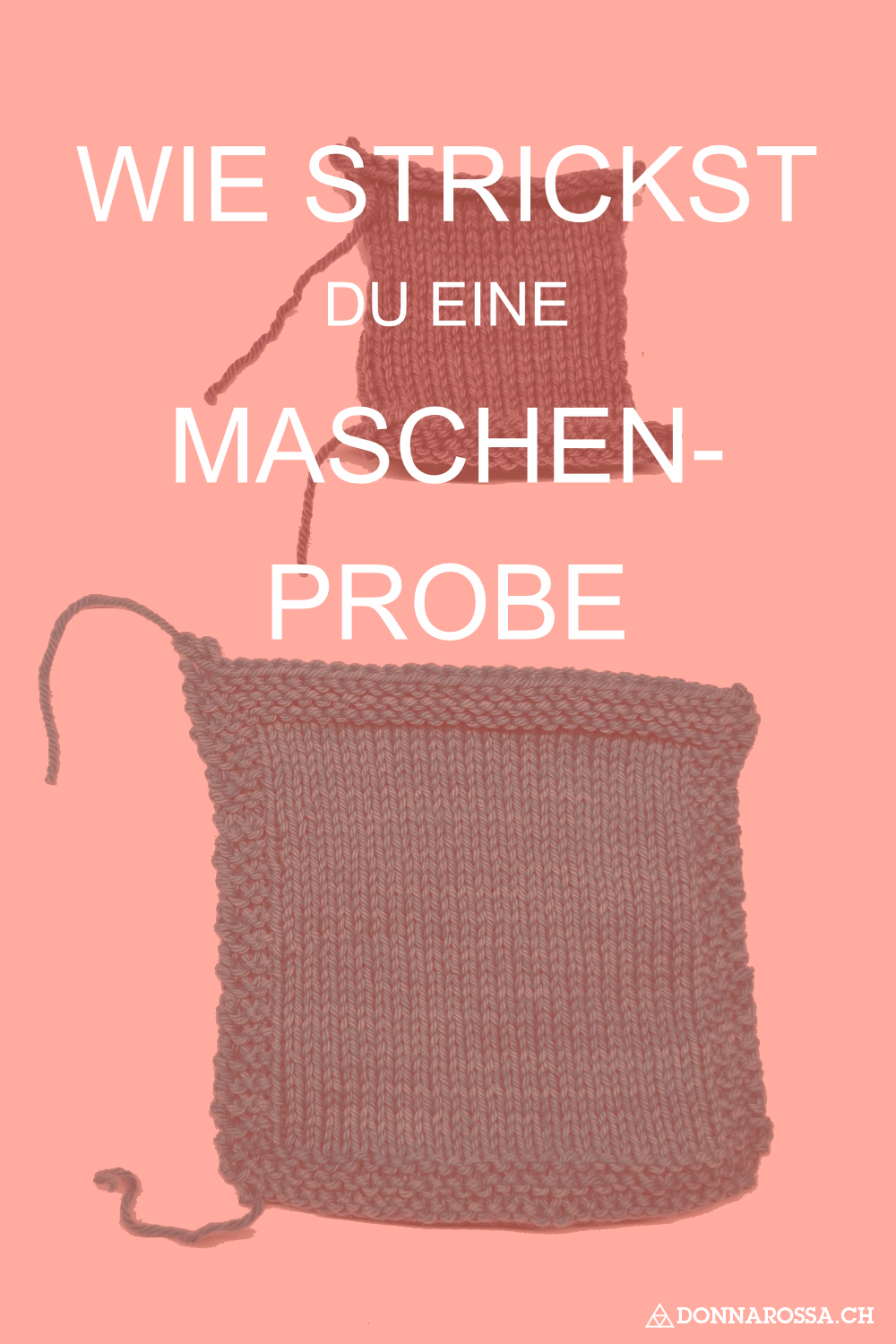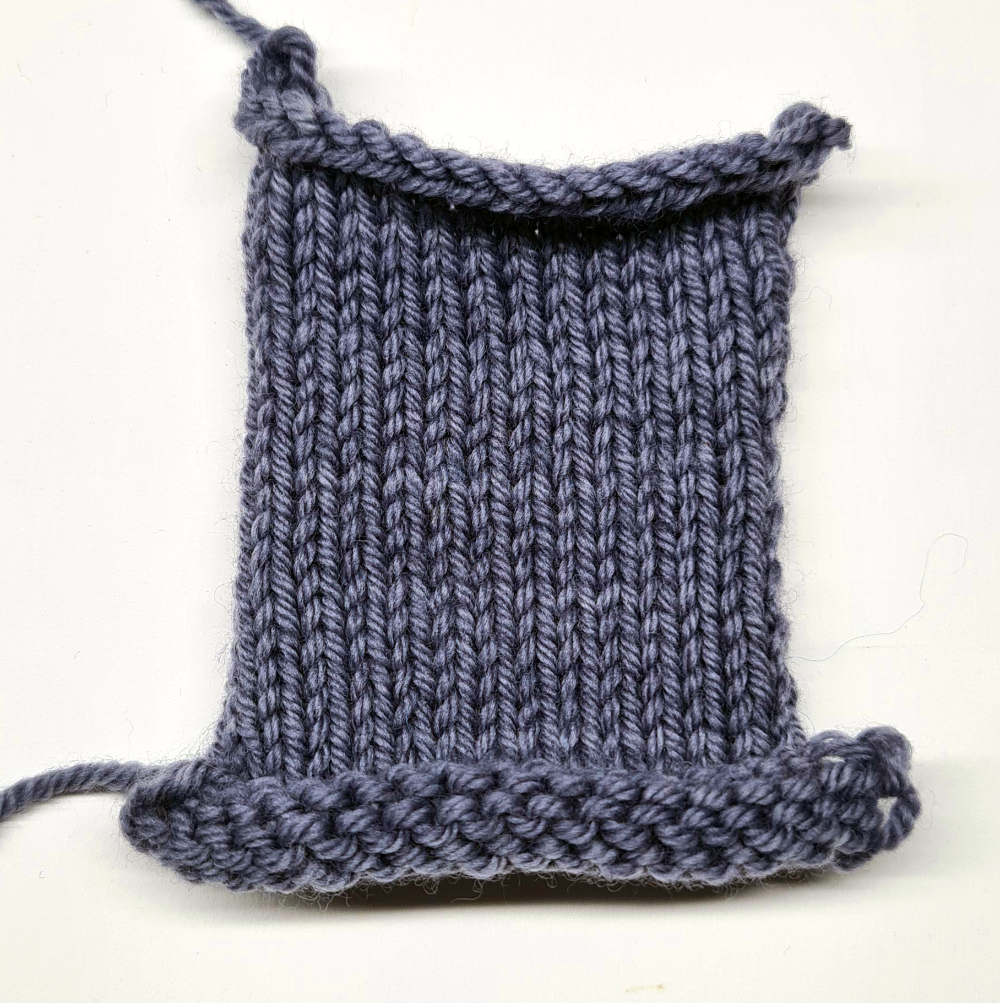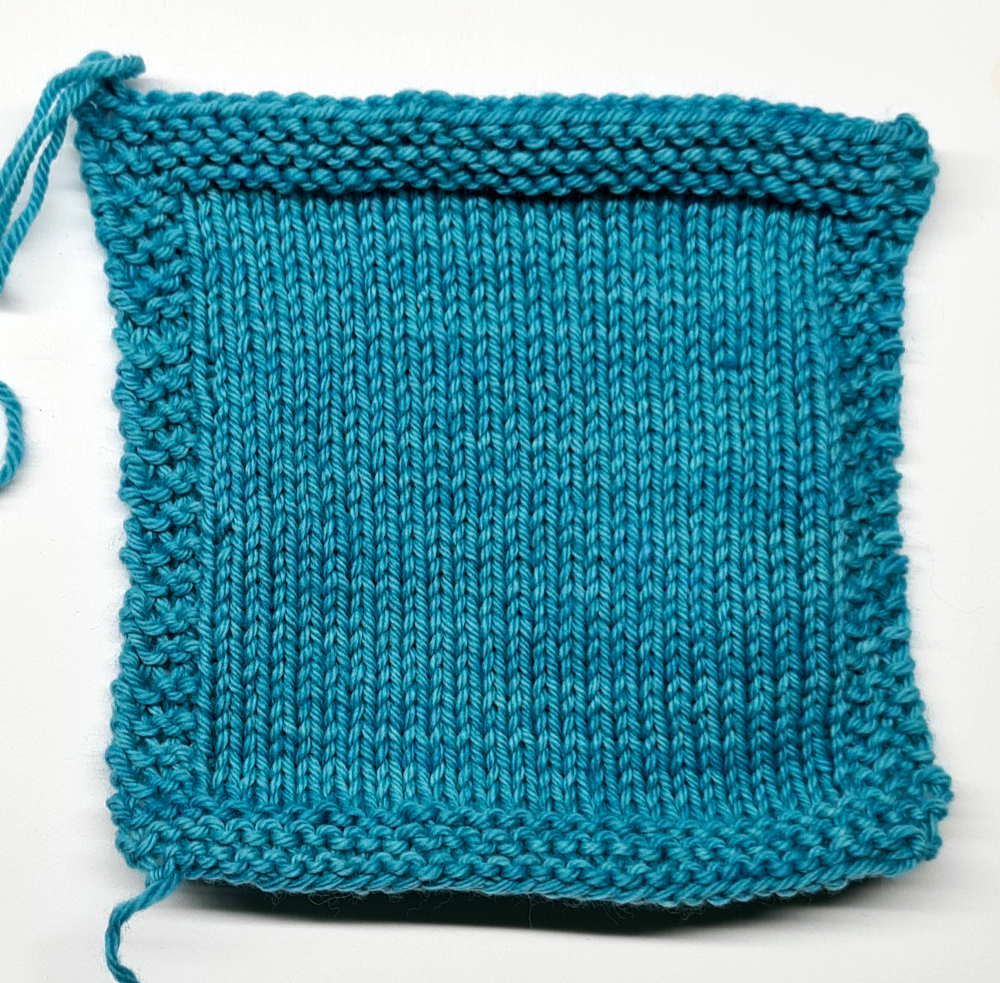Knitting a gauge swatch: a tricky subject in the knitting world. Often overlooked, but indispensable. I’ll show you how to knit a gauge swatch and why it’s the first step to knitting success.

Yes, I admit it: sometimes I skip the swatch.
But only for accessories such as shawls.
However, when it comes to a jumper, I recommend spending the extra 30 minutes for the swatch instead of spending several hours knitting a jumper that is far too small or too big and only realising it when you try it on.
What is a swatch?
Stitch gauge information is part of every good instruction. The instruction always tells you how many stitches and rows you should get on 10 x 10 cm.
Example:
Gauge: 22 sts x 34 r = 10 x 10 cm (4 x 4 in) in stocking stitch after blocking
A swatch is intended to match the needle size, the material and the pattern. This will quickly tell you whether you need to use a different needle size. Because if you don’t end up with the same number of stitches at 10 cm, the knitted piece can become larger or smaller.
Every knitter has a different gauge. That’s completely human. It is therefore important – even if you are using the original material – to make a swatch.

Please don’t knit a swatch like this!
I often see in my courses that knitters cast on exactly the same number of stitches for the gauge as indicated in the gauge chart. Then they start knitting and the edges curl. They often pull the swatch so that it fits to approx. 10 cm.
Please don’t do this!
Why? Because with stocking stitch, the edges curl, the selvedge stitches warp and therefore the swatch can hardly be measured accurately. So I can’t take the whole width of the knitted piece to measure. Instead, I can perhaps measure 5 x 5 cm or 8 x 8 cm and then have to use the rule of three to calculate how many stitches I get on 10 x 10 cm.

Knitting the correct swatch
- A swatch is ideally approx. 15 x 15 cm in size. I cast on approx. 10 sts more for the gauge swatch. So if we take the above example (22 sts) as a starting point, I cast on 32 sts.
- To prevent the gauge swatch from rolling, I knit a border round. I usually knit this frame in garter stitch (or pearl stitch). I knit the first 6 rows in garter stitch. Then I always knit the first and last 3 stitches. In between the corresponding pattern for the gauge swatch.
- It’s important to use the same needles for the swatch as for the large piece. (Unfortunately, I learnt this the hard way and would like to spare you the trouble. Because depending on the material of the needles – whether metal or wood – you may get a different swatch).
- When knitting the gauge swatch, make sure that you are in the same relaxed state as when you are knitting the large piece. So if you are annoyed, this can affect your gauge and you will knit tighter. So relax!
Afraid you won’t have enough yarn?
In my patterns, I always add 10% more yarn so that there is enough for a swatch.
If there isn’t enough yarn, I use the yarn from the swatch. Tip: As I’m lazy when it comes to sewing, I don’t cut the thread when I bind off the swatch, but push the ball of yarn through the last loop. Of course, I don’t wash the ball of yarn when I wash the swatch, but place it on the edge of the sink.

What do I do with the swatch now?
Have you finished knitting the gauge swatch and are now wondering what to do with it?
I recommend that you measure the swatch now. Ideally, you should use a ruler or a measuring tape with glass fibres (I use this one), that does not warp. Warum? Because measuring tapes stretch over time.
Now measure horizontally in the upper half of the swatch. Why at the top? Because it takes a few rows to get used to the yarn and knit regularly.
Now count the number of “V “s to 10 cm. If you get less than 22 sts (e.g. 20 sts), switch to a thinner needle. If you end up with more than 22 sts (e.g. 24 sts), use a thicker needle.
I do the same vertically to count the rows.
Then I wash the swatch. Depending on the material and type of spinning ( woollen or worsted yarn), the gauge will behave differently when washed. That’s why I wash the swatch and block/dry it, just as I will do with the finished piece. (Click here for the tutorial on washing and blocking).
Before I measure a second time, I tug at the swatch a little. Just like we do with our clothes. I lay the swatch flat on the table. Now I measure again horizontally and vertically and count the “V “s.
Why do I measure twice? So that I know what e.g. happens to the body length: will the knitted 30 cm remain or will it change?
If you only want to measure once, simply measure after washing.
Conclusion
You should therefore never make the swatch too small. Because otherwise it makes no sense.
As a rule, it is worth taking a swatch. Because you don’t always have the original yarn from the pattern available.



Leave a Reply